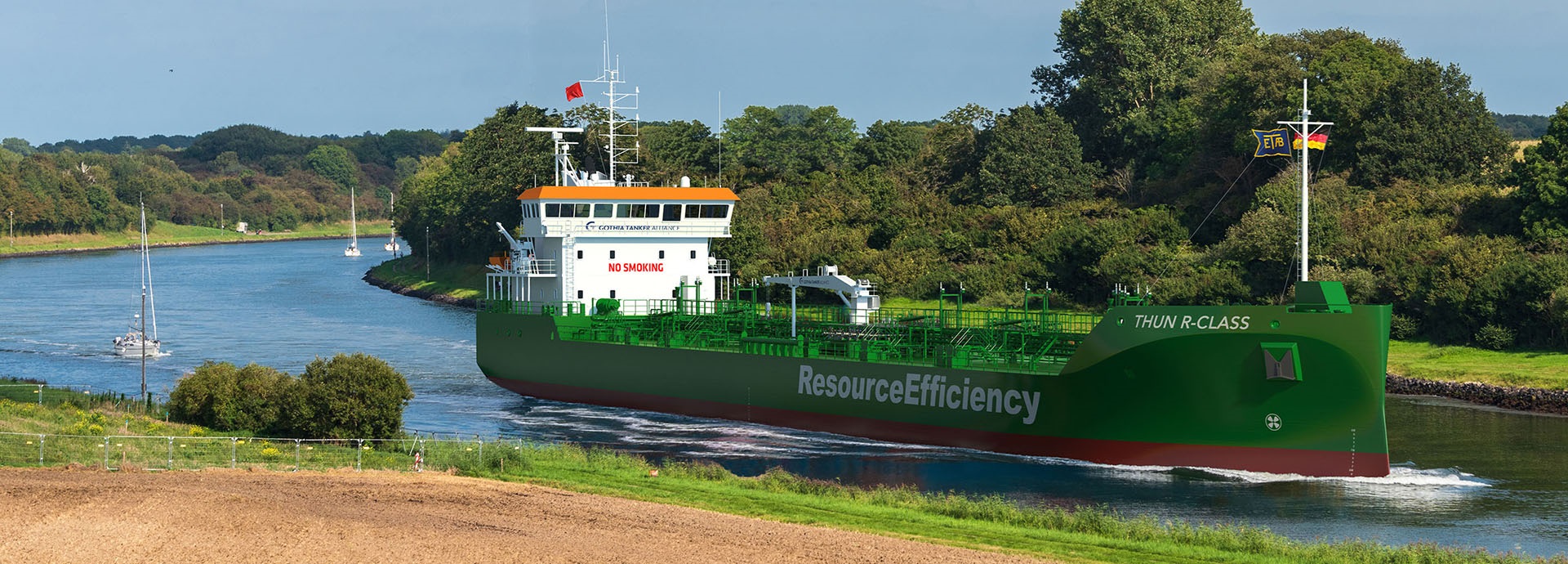

How does the Wärtsilä 25 engine help futureproof a newbuild fleet?
How can you make sure your newbuild vessels won’t become stranded assets as environmental regulations tighten during their lifetime? For Swedish shipper Erik Thun Group, selecting Wärtsilä 25 engines was the right way to ensure high environmental performance – now and in the future.
When Thun Tankers B.V., a subsidiary of Erik Thun AB, ordered four new coastal tankers, efficiency was one of the company’s top priorities. Erik Thun Group’s new Resource Efficiency Class tankers use adaptive propulsion to reduce energy consumption. They are also prepared for a shore power connection to reduce emissions in port and have a battery pack on board. The modern hull design and state-of-the-art equipment help maximise fuel efficiency and lower emissions.
Smoothing the way to greener future fuels
The choice of engine and fuel are critical to reduce emissions. This is why Erik Thun chose the Wärtsilä 25 medium-speed 4-stroke marine engine. The Wärtsilä 25’s outstanding fuel economy and low emissions help to ensure the very high performance of the newbuilds. Furthermore, the engine’s easily upgradeable modular structure will make it relatively straightforward to adopt a green fuel when one becomes readily available and economically viable.
Upgrading for the chosen future fuel simply means replacing selected engine components, with no need to take the vessel out of action for a long, complex overhaul. These future-proof vessels are in no danger of becoming stranded assets as the industry transitions to carbon-neutral fuels.
“The ships will be reliable and easy to operate, which is vital in the intense coastal trade that they serve. It is important to build a quality ship that functions well over its entire lifespan, not just for the first few years of operation,” explains Henrik Källsson, Deputy Managing Director at Erik Thun Group.
Maximised uptime
Reliability was another reason Erik Thun went with the Wärtsilä 25 engine. Its high power output per cylinder means fewer cylinders are needed, so the engine takes up less space on board. Like cargo aircraft, ships are only making money when they’re moving goods around, so maximising uptime is a must. With the Wärtsilä 25, Erik Thun can expect the time between overhauls to be extended by a minimum of 30%. That’s on top of good fuel economy, low emissions, smoke-free operation at all loads and IMO Tier III compliance.
Erik Thun’s new tankers will be among the first in the world to sail under the power of the Wärtsilä 25, which perfectly complements the company’s goal to minimise its environmental footprint through innovative ship design.
Challenge
Find the right engine to future-proof four newbuild vessel to ensure a long, reliable and resource-efficient service life.
Solution
Wärtsilä 25 medium-speed 4-stroke marine engine.
Benefit
The engine’s easily upgradeable modular structure means Erik Thun can adopt low-carbon fuels as they become available.





